Motorcycle Investor mag
Subscribe to our free email news
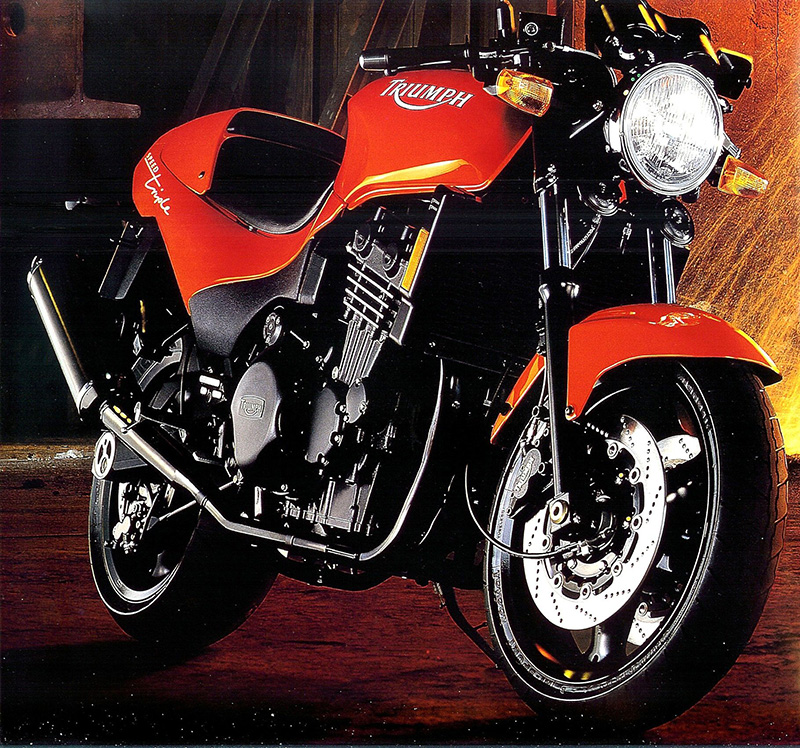
Profile: Triumph T300 series Speed Triple
by Guy ‘Guido’ Allen, Jan 2021
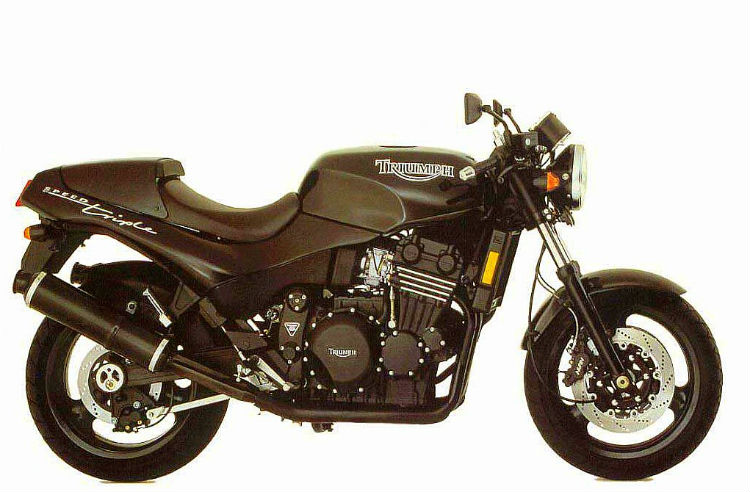
Hinckley's best?
The style of the first Triumph Speed Triple was never really surpassed
Some days, you just nail whatever it is you're doing and it's entirely possible you're doomed never to perform that task as well again. Ever. Which, in a lot of cases, is of no great importance as life will continue to trundle on.
For Triumph, we reckon it absolutely hit a peak in
styling terms with the very first generation Speed Triple,
the T300 series.
The funny thing is, the bike could easily be regarded as something of a parts bin special. Triumph at the time would much prefer you referred to its 'modular' construction, where several models shared the underlying architecture and could be produced with relatively few component changes.
It wasn't a new idea, even back in the early to mid-1990s when the Hinckley factory got into its stride. After all, Harley-Davidson had, decades earlier, turned it into an art form.

The recipe went something like this: take the massive steel single spine frame and chassis shared with the rest of the fleet, add the premium suspension and brakes used on the Daytona 900 (above), along with the triple-cylinder 885cc powerplant in the 98hp tune that was shared by the Trident (below), Daytona 900 and Sprint.
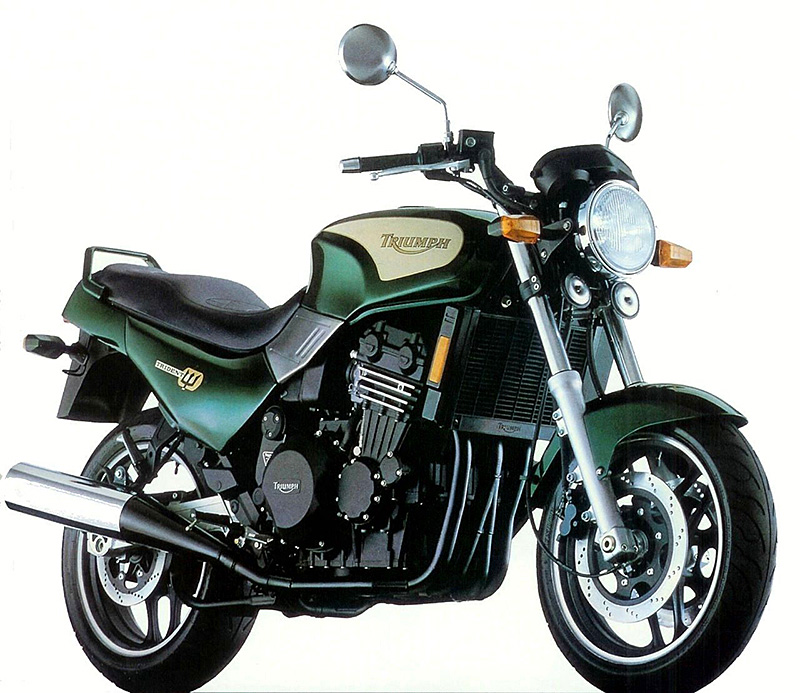
What helped to distinguish it was the Daytona-style
handlebars and ride position, with a unique instrument
cluster (below) and of course the complete lack of
fairing.
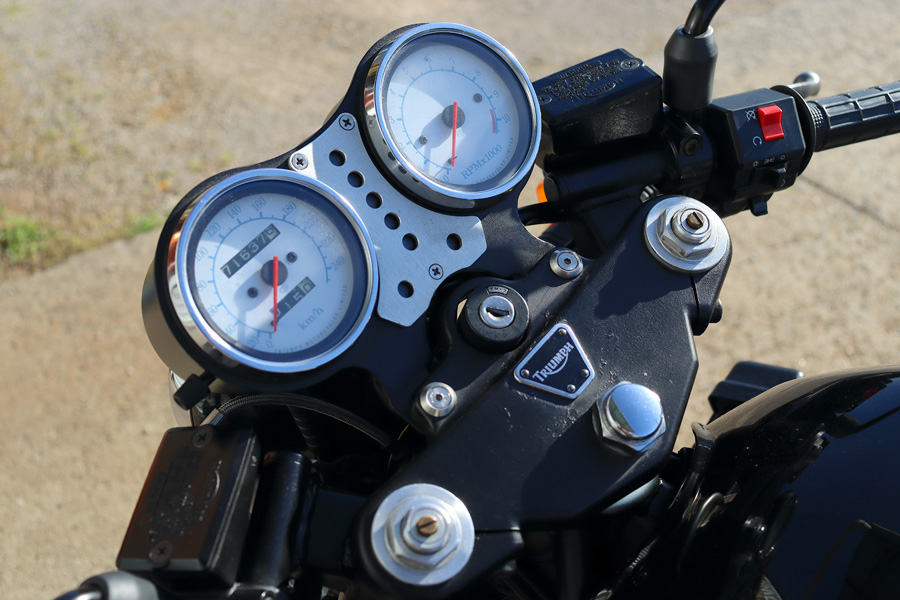
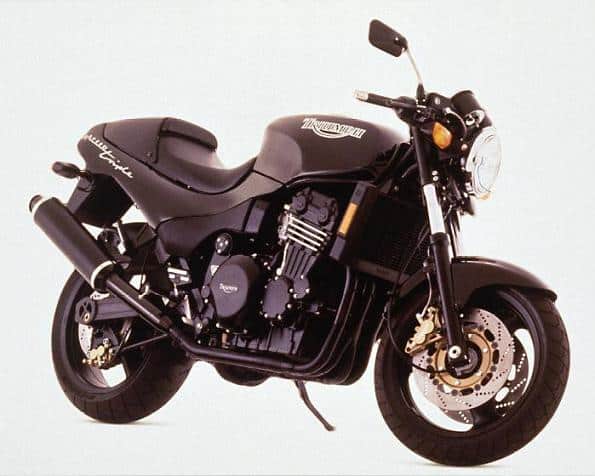
The result, particularly with the accessory pillion seat cowl in place, was visually stunning. Simple, muscular and a nice twist on the cafe racer theme.
Launched for 1994, the first series featured a five-speed transmission and was built 1994-95. A second series with a sixth cog ran 1995-96. Also, early on, a few examples using the 'short stroke' 750 triple managed to escape the factory.
They were not necessarily a cutting-edge ride, but they were competent and thoroughly engaging. Triumph claimed a 209kg dry weight, which enabled respectable performance, particularly considering the unfaired ride positon.
It was a design that suited taller riders better, with a long reach to the handlebars. They could also feel a little top-heavy when the giant 25lt fuel tank was full.
You could enhance performance a little with an accessory and more free-flowing Sebring three-into-one exhaust system. Developed for the short-lived one-model race series in the UK, it was sold through Triumph dealers.
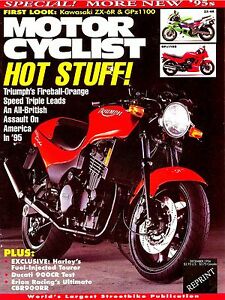
Braking from the four-spot front discs was about par for the course in the 1990s. However that too could be upgraded with a set of Alcon six-spotters sold as an accessory and fitted standard to the Daytona Super III. They changed the braking from good to sensational for the day.
They were strong mechanically, though some T300 engines did suffer sprag clutch issues over time – see our T300 profile for more on that topic. That aside (and it didn't affect all bikes) a well-cared for example would have no trouble reaching 200,000km.
It's successor, the T500 series Speed Triple, was a very different animal, with aluminium frame and a new fuel-injected engine. Though a worthy motorcycle, it never quite captured the magic of the first series.
Hinckley Triumphs have struggled to get market traction
as collectibles, so far. However if and when they do, the
Speed Triple should become a very desirable bit of kit.
See the 1994 road test from Classic Two Wheels;
See our Triumph T300 series profile.
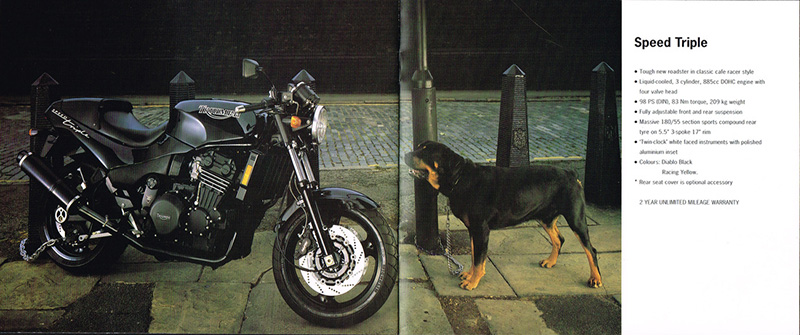
Above: The period brochure was memorable.
***
Good
Stylish
Strong
Fun to ride
Not so good
Café racer ride position
SPECS:
Triumph Speed Triple T300 series
ENGINE:
TYPE: Liquid-cooled, four-valves-per-cylinder, infline
triple
CAPACITY: 885cc
BORE & STROKE: 76 x 65mm
COMPRESSION RATIO: 10.6:1
FUEL SYSTEM: 3 x 36mm flatslide CV Mikuni carburettors
TRANSMISSION:
TYPE: Five or six-speed, constant-mesh,
FINAL DRIVE: Chain
CHASSIS & RUNNING GEAR:
FRAME TYPE: Egli-style single spine steel
FRONT SUSPENSION: 43 Kayaba fork, adjustable preload and
rebound
REAR SUSPENSION: Monoshock, adjustable preload and rebound
FRONT BRAKE: 2 x 310mm discs with four-piston calipers
REAR BRAKE: 255mm disc with two-piston caliper
DIMENSIONS & CAPACITIES:
DRY/WET WEIGHT: 209/230kg
SEAT HEIGHT: 790mm
WHEELBASE: 1445mm
FUEL CAPACITY: 25lt
TYRES:
FRONT: 120/70-17
REAR: 180/55-17
PERFORMANCE:
POWER: 73kW @ 9000rpm
TORQUE: 79Nm @ 6750rpm
STANDING QUARTER 11.4sec
TOP SPEED 217KM/H
OTHER STUFF:
PRICE WHEN NEW $14,990-15,950 plus ORC
-------------------------------------------------
Produced by AllMoto abn 61 400 694 722
Privacy: we do not collect cookies or any other data.
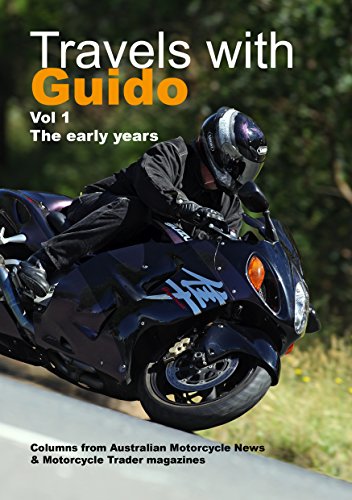
Archives
Contact




